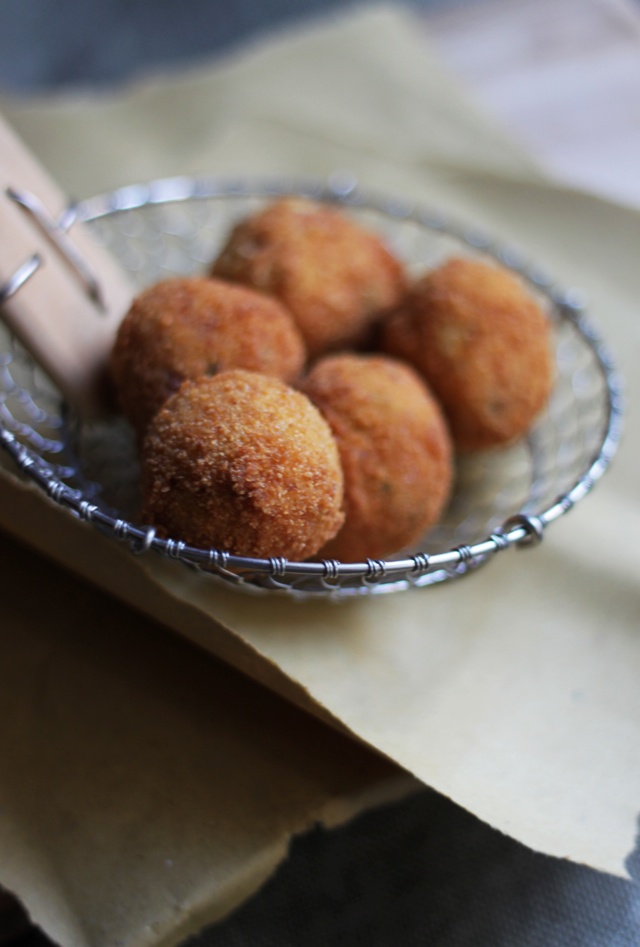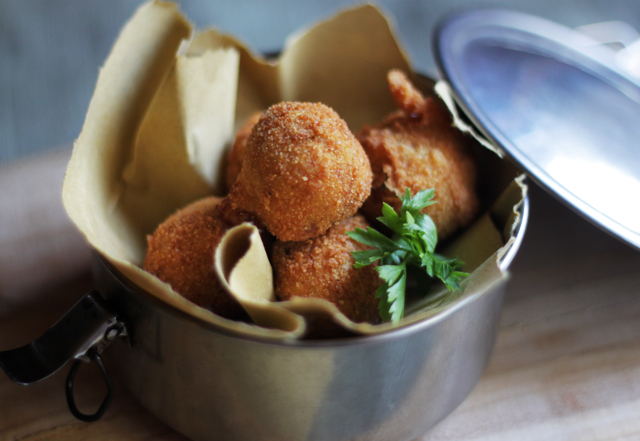Tripe. The very word itself usually causes a scrunched-up face on the person whose ears have been subjected to the offensive word. What exactly is it about the suggestion of tripe, or any sort of offal for that matter, that causes such displeasure? Is it because it’s identified more closely to its origins than, say, processed ham or a hamburger? Surely that’s a good thing – knowing where your food comes from and what exactly is in it. Ok, so it’s one of the four stomachs of a cow. But what makes it so different from our favourite meat products? Ribs and rump steak usually top the list, the best quality sausages you can find are likely to be filled in animal intestines and one of the best parts of beef or pork has got to be its cheeks. What’s not to love about knowing which part of the animal your meat comes from?
Another reason I am a fan of using offal is because it makes good use of the whole animal. This really came home to me when I witnessed my first pig butchering – not a single piece of it went to waste. If we were all our own farmers and butchers, perhaps we would be more careful about honouring the whole animal, not simply eating one part of it and then throwing the rest away. It’s easier to do this when you buy pre-packed pieces in a supermarket of course, but think about this the next time you only reach for the chicken breasts or those steaks to throw on the grill.
Offal has a different reputation in Italy. If you mention the word “trippa” in Florence, you will get quite a different reaction. Long a tradition in Florence, with its populace of offal-eaters and creative cooks who do imaginative things with leftovers, tripe is not only a tradition, but obligatory on the menu of any trattoria that proudly calls itself Florentine. It’s not unusual to see workers sitting in their local trattoria or standing up at the lampredottaio (a food van selling lampredotto panini, amongst other things), tucking in to a big steaming bowl of tripe at lunchtime.
Funnily enough, Artusi – the master of traditional Italian cookery – himself was not fond of tripe and even says in his first tripe recipe, “Tripe, however it is cooked and flavoured, is always ordinary.” He goes on to denounce the digestive effects of tripe and how those with “weak stomachs” may find it unsuitable. Interestingly, his anecdotes accompanying his tripe recipes suggest that his readers may have turned up their noses at the idea of eating tripe, and he suggests this recipe for deep fried tripe meatballs to convert the squeamish.
I have to admit, I’d never had tripe before I moved to Florence. I had my first bowl of trippa alla fiorentina (cooked in a tomato sauce much like ragu) shortly after my arrival in Florence. It was not an instant favourite, but it was a must and it opened me up to the Florentine world of offal. Before I knew it, I was eating lampredotto panini (which, I must say, I am quite partial to), lampredotto ravioli, tongue carpaccio, cow teats (chewy) and, my husband’s absolute favourite, pig’s liver cooked in lard with wild fennel seeds. Tripe remained low on my list of favourite offal, that is, until I learned how to use it in a few different ways, such as delicate tripe salad and meatballs.
The idea of making deep fried tripe meatballs was inspired by one of the most delicious antipasti I think I have ever had in Florence – polpette di lampredotto (meatballs made out of the forth stomach of the cow) at Osteria Il Magazzino, which specialises in quinto quarto, offal.
This recipe is based one of the few tripe dishes Artusi considers decent, which he in turn found in a cookbook dating to 1694. Being meatballs, you can throw in really any extra seasonings you like, such as your favourite herbs (try thyme) or perhaps – if you’re not sure how you feel about tripe just yet – you can add some good quality sausage meat. They make a great antipasto (imagine these with a cool negroni) and it’s an easy way to get into using this cheap, nutritious, healthy ingredient.


Polpette di trippa
Serves 4
- 400 grams of tripe (preferably honeycomb or reticulum tripe)
- 100 gr prosciutto
- 1 egg
- a handful of grated pecorino or parmesan cheese
- a handful of day old bread softened in milk (or good quality dry breadcrumbs)
- a handful of parsley
- a pinch of nutmeg
- salt and pepper to taste
To finish:
- a beaten egg
- a handful of flour
- a handful of fine breadcrumbs
In Florence, you can purchase the tripe already boiled, which saves you some time in front of the stove. If you buy it fresh from your butcher, you can simply place it in a pot of water with a white onion and bring to a boil. Boil for 1 hour or until soft. You may need to add more water to keep the tripe sufficiently covered. When it is done, remove the tripe from the water, rinse it gently and allow to cool.
In a food processor, finely chop the boiled tripe and prosciutto. If you don’t have some nice slices of prosciutto handy, you can use regular ham but the result will be a more delicate flavour; bacon would maybe be a better substitute.
Add the eggs, parmesan cheese, breadcrumbs, parsley and seasonings and processed until combined.
Roll the mixture into small balls, dip each ball first in flour, then egg and then the fine breadcrumbs and deep fry in very hot olive oil until golden and crispy. Serve immediately as an antipasto, accompanied perhaps with some marinated olives or thinly sliced prosciutto. Alternatively, you could turn this into a more substantial dish by sautéing the meatballs with a little olive oil and adding a nice tomato sauce and fresh basil leaves.
Original Website:Tripe: the not so favourite ingredient | Emiko Davies


 English
English  中文
中文